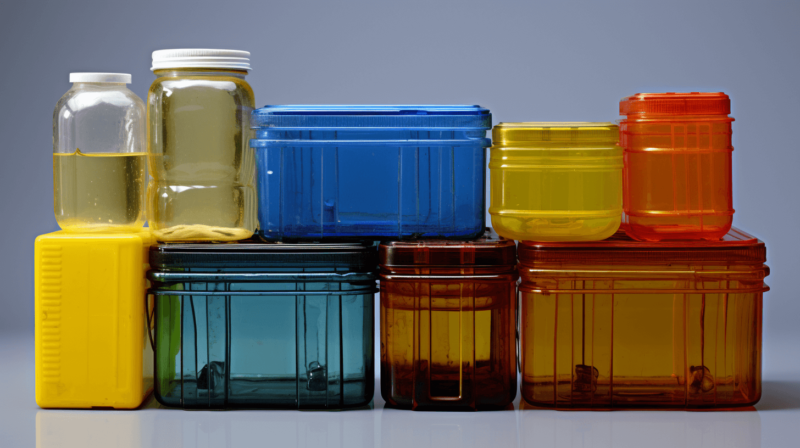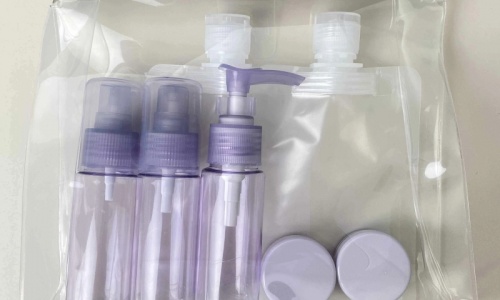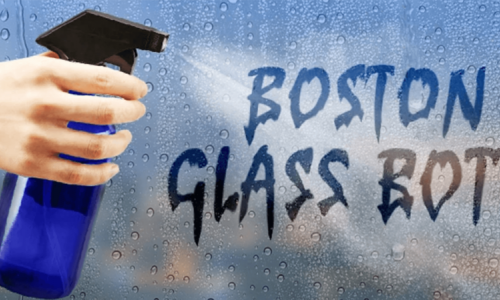Introduction:
Freezing leftovers in plastic containers is incredibly convenient for our on-the-go lifestyles. But how safe is it really? This comprehensive guide dives into the pros and cons of freezing food in various types of plastic containers, provides healthier alternatives, and gives expert tips for safe food freezing.
Types Of Plastics Used For Food Storage Containers
Not all plastics are created equal when it comes to safety for food storage. Here is a breakdown of the most common types of plastics used:
PETE or PET (Polyethylene Terephthalate): PET is the most popular type of plastic for water bottles, containers, and jars. It is considered safe for one-time freezing and short-term storage. However, reuse over time can cause PET to break down and leach chemicals into food and drinks.
HDPE (High-Density Polyethylene): HDPE plastic is commonly used for milk containers, juice bottles, and other food-grade products. It does not contain BPA and generally does not leach chemicals into foods. HDPE is safe for freezing and makes durable, long-lasting storage containers.
LDPE (Low-Density Polyethylene): LDPE is used to make flexible plastic wraps, bags, and squeeze bottles. It is inert and will not contaminate food. However, LDPE plastic is less readily recyclable.
PP (Polypropylene): Yogurt cups, margarine tubs, and other food storage containers are often made from PP plastic. Like HDPE, PP is considered safe and does not leach chemicals even at high temperatures.
PVC (Polyvinyl Chloride): PVC plastic is used to make cling wraps and bags. It contains phthalates and can release dioxins, which are potentially carcinogenic toxins. Avoid freezing food in PVC.
PS (Polystyrene): Polystyrene foam cups and clamshell takeout containers are common but made from one of the most toxic plastics. Manufacturing PS releases carcinogens. Do not freeze food in PS.
PC (Polycarbonate): Polycarbonate plastic has BPA that can leach into food and drinks. It is used for water cooler jugs, baby bottles, and other containers. Polycarbonate should not be used for freezing.
Safer Alternatives to Plastic for Freezing Food
The safest alternatives to freeze food include:
Glass food storage containers with tight-sealing lids. Look for tempered glass that is thermal shock resistant.
Aluminum foil is excellent for making freezer bundles and wrapping meats. Avoid direct contact with acidic foods.
Wax paper wraps safely freeze breads, cookies, and other baked goods.
Freezer-safe zipper bags designed for long-term frozen storage. Look for BPA-free bags.
Reusable silicone bags are a plastic-free solution. They are flexible and washable.
Stainless steel containers keep food fresh without risk of chemical leaching.
Expert Tips for Freezing Food in Plastic Containers
If Using Plastic, Follow These Tips:
Avoid freezing in containers labeled #3 PVC, #6 PS, and #7 PC plastics which can leach chemicals.
Do not microwave plastic containers once food is frozen, even if labeled microwave-safe.
Freeze food in single-use PET and discard after thawing to prevent chemical leaching from reuse.
Allow hot food to cool before freezing in plastic to prevent warping lids and chemical leaching.
Choose BPA-free plastic containers labeled #1 PETE, #2 HDPE, #4 LDPE, and #5 PP.
Conclusion
Freezing food in plastic containers is convenient but certain types of plastic pose health risks from chemical leaching, especially when reheated. Opt for glass or silicone containers whenever possible. If using plastic, avoid PVC, PS, and polycarbonate. PETE, HDPE, LDPE, and PP are safest for one-time freezing. Ultimately, limit use of plastics for food storage and freezing.







